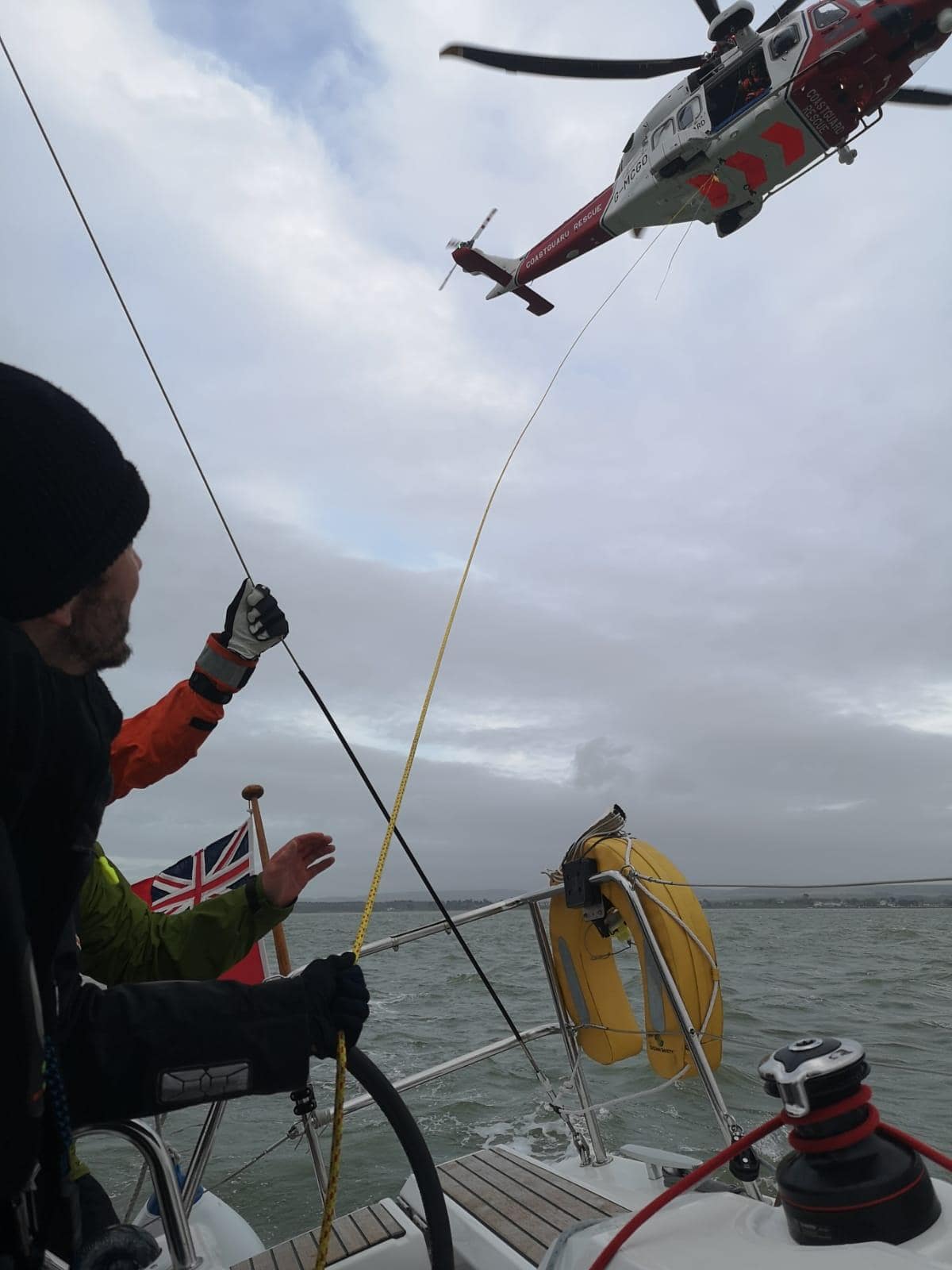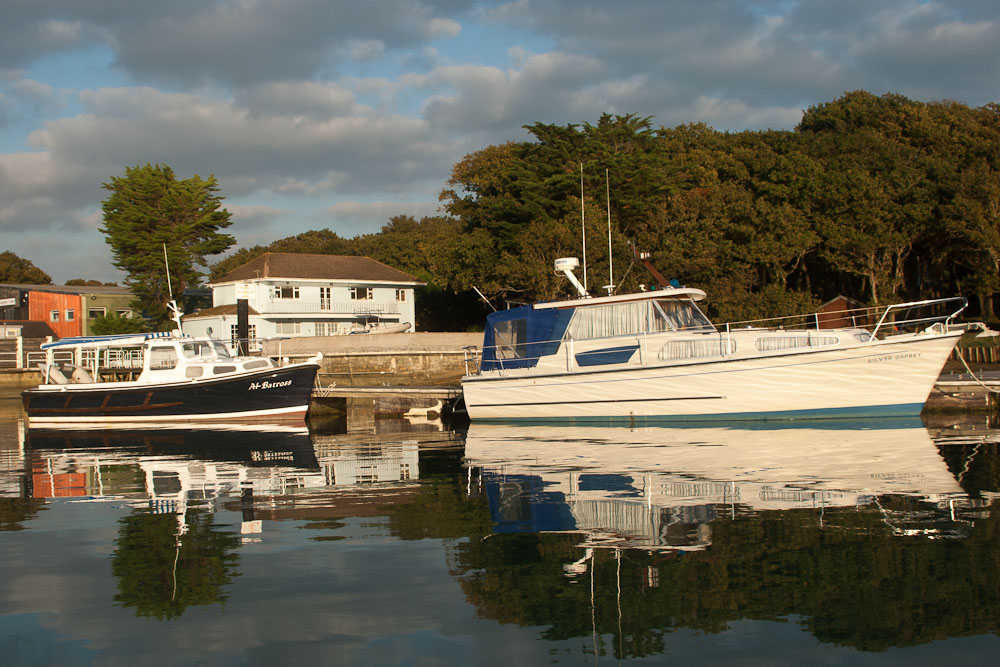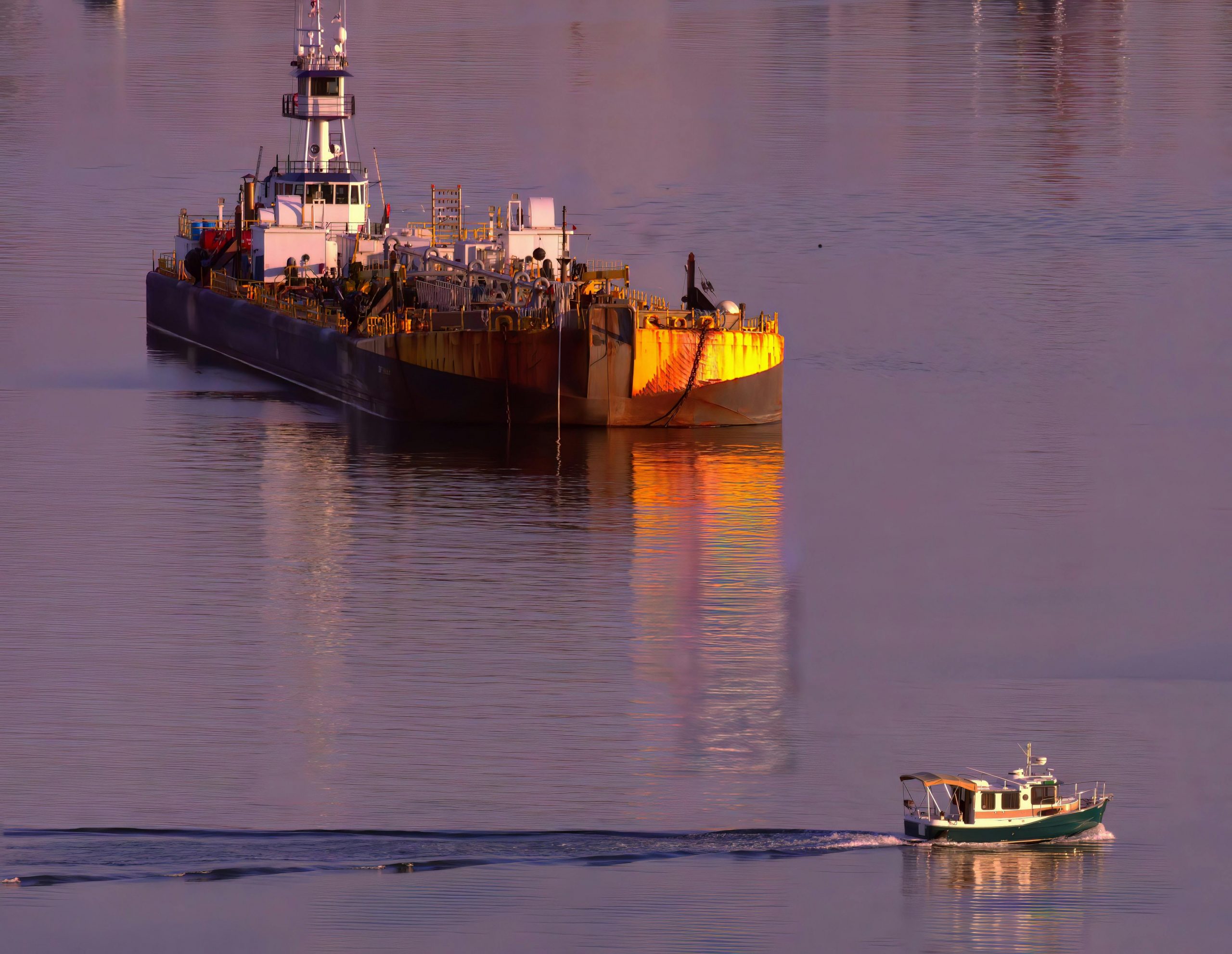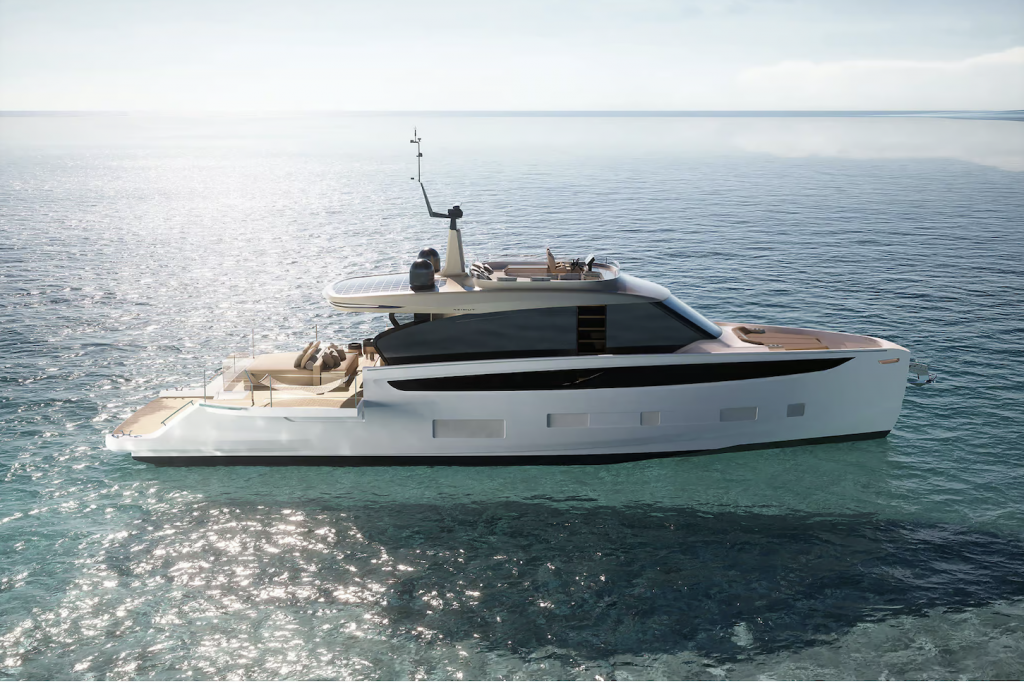With the last turn on the cleat our yacht is safely moored up. We are exhausted. What a day! I sit back in the cockpit and close my eyes. Time to take in today’s events.
I can see the helicopter but can’t hear anything from its position 2 miles downwind. Just a small bumble bee hovering above the waves somewhere off Cowes. Today is cloudy, cold, windy, with just a hint of dampness in the air. It’s the 14th March 2020; a week before lockdown.
A fast tide is pushing us west against a strong wind blowing through the Needles Channel, steep waves capped in white are everywhere. Minutes later and the full glare of the helicopters spotlight dazzles us and the whirring thud of the rotor blades drown out the natural sounds of wind and waves.
I focus on the land ahead finding a reference point in Lymington for Rob to steer towards on our close reach.
Glancing back, I find the sky empty. The rumbling roar of the engine and blades is deafening. I lift my eyes towards the Coastguard helicopter, gleaming red and white above a whirlpool of spray. It’s unbelievably close, only metres above our mast flying skilfully as slow as us.

The starboard side door slides open and 2 crew in orange jackets raise a hand drawn sign with just two numbers, 6 7. I dash below to re-tune the VHF.
“Coastguard helicopter, coastguard helicopter…..this is Palomar, Palomar….over”
“Palomar, this is coastguard rescue…..we are conducting rescue training exercises, can we please use your vessel for our next exercise…over”
I was stunned; was this happening? My finger hovered over the transmit button.
Yes, yes, yes. Compose yourself now! “Coastguard rescue, this is Palomar, we will happily help with your training exercise…over” I hope my excitement is disguised by the crackly VHF transmission.
What happens now? All I have in my knowledge bank is a brief memory from my Yachtmaster theory course and a page in Reeds skipper handbook. Think now. What do I need to do?
Have I got this right? The helicopter pilot will direct operations, tell me what to do and then……let the hi-line touch the boat to earth any static charge and….. don’t fire any flares….and…..am I ready?
I listen to the instructions on the VHF, climb back on deck and look at my crew. They stare back at me, eyes asking “what now”?
Rob is a photographer, Maria sells huge gas tanker ships and Sian works for the Cruising Association in London. All 3 are on the second day of their RYA course with First Class Sailing. Palomar is one of their new Beneteau 381’s and I am their instructor who is about to experience a helicopter rescue for the first time; ever! Time for me to act cool.
Before anything can progress, I have an important job to do. Situational awareness is one of the key essentials I teach students and right now, we are just over a mile from Lymington, where the depth of water reduces significantly a long way offshore.
I slide down below and reach for the radio.
“Coastguard rescue, this is Palomar…..we need to turn to port as we are heading into shallow water….is this ok with you…..over”
The pilot understands and the helicopter turns away, accelerates and climbs until it looks once again like a bumble bee over the sea.
15 minutes is all it takes in this strong wind to sail close to the Isle of Wight. A sharp turn and we are back on port tack. This has bought me time to think and plan for the rescue exercise ahead. I have collected the hand-held VHF from below to stop the repeated climbing and descending the companionway to access our main radio above the chart table. I thought the noise would be too great for me to use a radio on deck but find that I can just about make out what the pilot is saying.
“Coastguard rescue, this is Palomar…..we are ready for you now….over.”
“Palomar, this is coastguard rescue……could you please sail as close to the wind as possible and hold a steady course. We will send down a weighted hi-line first. Can you please collect it and pull it aboard, hard. You don’t need to let it touch down first, it’s safe to handle immediately. It will take 2 or 3 crew to do this and please do not attach the end of the line to your vessel. Our man will descend when he is ready….over”
“Coastguard rescue, message understood…..out”. Now for the action.
Sailing so close to the wind is challenging in the growing swell, with sudden gusts of wind and downdraught from the helicopter temporarily stalling the sails. I take over the helm and wait. Why are they taking so long? We sail slowly, close hauled, sheets in tight, towards Lymington with the helicopter just above our heeled over mast, steady and ready.
It seems ages, just sailing slowly with the terrific noise and power of the helicopter above our yacht. We sail, they fly, in perfect harmony for 30 minutes. Nothing changing except Lymington creeps ever closer with its shoals offshore.
The line descends. A yellow rope with a black square weighted bag on the end. Rob catches it first at the stern and passes it to me around the back stay. I pass the hi-line to Sian and Maria in the cockpit, Rob joins them and all three haul in the line until it is taught.

The pressure is immense. Tons of helicopter and yacht, buffeted by strong winds, are now joined by a tenuous line held in the hands of 3 people in the cockpit.
I suddenly become acutely aware of the danger the rescuer will be in as they descend the line. They are waiting; to check we are ready and that our yacht is steady and settled on its course. I don’t blame them either. Now the helicopter slides to the side, gently and gracefully. The line tightens and I feel the stern of the yacht pulled to port, making us turn away from the wind and heel more.
Seconds later a man in an orange dry suit slides down a steel cable from the helicopter using the hi-line to guide him on his diagonal descent from aircraft to boat. I had used a similar system to abseil off the Old Man of Hoy sea stack in Orkney to bypass a large overhang which left the ropes hanging free a long way above the sea.
Within seconds he is onboard. All smiles and a thank you. A quick message on his radio to the pilot and he unclips from the steel cable, keeping it held firmly in his hand. The hi-line slackens but remains in place joining helicopter to our crew’s hands.
We sail on slowly, under the helicopter shadow and attached by the yellow line. Only minutes pass before I notice the racing platform. Our depth now 9 metres. We need to tack away from Lymington; soon. The helicopter crew understand and quickly prepare for a sharp exit. He explains what we need to do. The steel cable is re-attached, the hi-line is coiled and passed over the guard rail, the helicopter roars. As his line tensions he jumps over the guard rail into the air. In seconds the helicopter is soaring away winching their man aboard.
We turn towards Yarmouth as the radio comes to life.
“Palomar, this is coastguard rescue, thank you for your assistance with our training, it has been a valuable exercise for us today and we would like to thank you for your patience and co-operation….over”.
I thank him in return and wish him a safe journey home. It’s been incredibly valuable for me and my crew. Rob asks me if this usually happens on a Day Skipper course. I tell him it does; but my laugh gives the game away.
The helicopter has gone, leaving us alone with just the wind and waves. Back to basics. Engine on, sails down, fenders out and mooring warps ready. Soon we are berthed alongside in Lymington. What an amazing day.
This was my first experience of a coastguard helicopter rescue. I hope this story helps yachtsmen who have yet to experience one. I reflect on what I could have done better. A few things maybe, but nobody gets things perfect the first time around. Do they?


